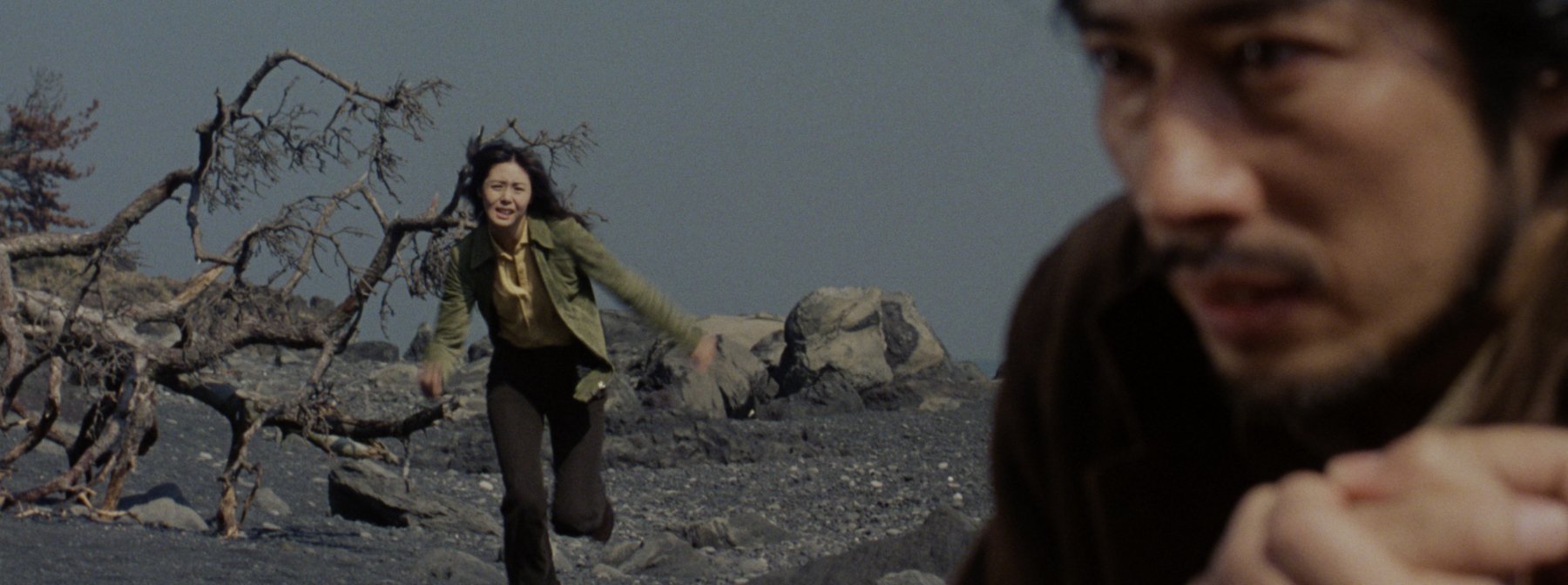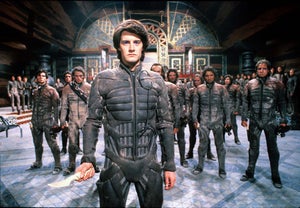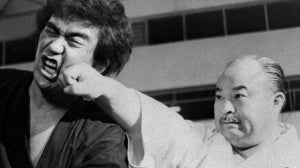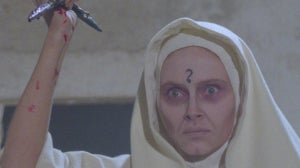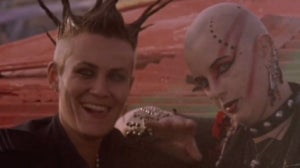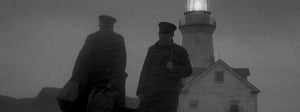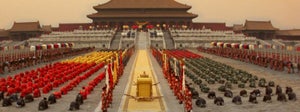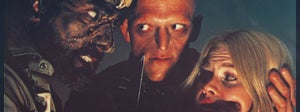
Anyone vaguely familiar with Japanese or horror cinema is likely aware of Ring (1998). Its iconic image of a long-haired girl crawling out of a TV set has become synonymous with modern East Asian horror. The man responsible? Hideo Nakata, who, at one time, was the hottest Japanese director on the planet. Ring’s runaway success saw Nakata become the face of the so-called J-Horror movement, which was spearheaded by the likes of Norio Tsurata and Kiyoshi Kurosawa. So how did a man with no interest in the genre become one of the most important horror filmmakers of recent times?
Nakata entered the film industry via a more traditional route, joining Nikkatsu Studio as an assistant director, where he worked under prolific Roman Porno director Masaru Konuma. After making his debut with the made-for-TV horror anthology Curse, Death & Spirit (1992), the director set his sights on making a documentary about his idol, the American filmmaker Joseph Losey. To get funding for what would become Joseph Losey: The Man with Four Names (1998), Nakata pitched and developed Don’t Look Up (1996) for broadcasting station WOWOW’s J-Movie Wars; it marked his first proper foray into the world of J-Horror.
The film has been labelled as a dry run of sorts for Ring, and between the wronged woman dressed in white and paranormally manipulated film stock, it’s easy to see why. In fact, one scene in which our director protagonist, Toshio Murai, carefully analyses a disturbing film reel is echoed by a strikingly similar sequence in Ring 2 (1999) – incidentally, the analyser in both movies is played by Yūrei Yanagi. Don’t Look Up opened unexpected doors for Nakata, the film impressing author Koji Suzuki, whose 1991 novel Ring was to be adapted by Kadokawa Shoten. Needless to say, Nakata took the project, and the rest is history.
In an age where films come and go in a flash on a seemingly infinite number of streaming services, it’s hard to fathom the seismic impact Ring had on the world of horror. Much like Star Wars (1977), The Exorcist (1973), and countless other lighting-in-a-bottle films, Ring was a case of the right project at the right time, with the right director at the helm. With co-writer Hiroshi Takahashi, who also penned Don’t Look Up, Nakata made several significant changes to Suzuki’s novel, the boldest being how antagonist Sadako ultimately reaches her victims. Ring is a melting pot of cultural influences, including traditional kabuki theatre, contemporary technological anxieties, and horror films of the past – Robert Wise’s The Haunting (1963) and Nobuo Nakagawa's The Ghost of Yotsuya (1959), to name a couple.
https://www.youtube.com/watch?v=m4iODTbUn1A&pp=ygUOdGhlIHJpbmcgYXJyb3c%3D
Ring's universal acclaim juxtaposed the critical disappointment of Jôji Iida’s Spiral (1998), the film’s original sequel shown as part of a double bill. Nakata was subsequently tasked with developing an alternative follow-up and given the freedom to deviate further from Suzuki’s source material. The result is Ring 2, an odd project that attempts to explore the logic behind Sadako’s iconic videotape curse in a more surreal fashion. The narrative climax features some alarming similarities with the much-reviled Exorcist II: The Heretic (1977), as our heroine, Mai, does psychic battle with the possessed child, Yoichi. While not as impactful as its predecessor, Ring 2 remains a daring sequel that’s impressively unsettling and surprisingly experimental.
Despite now being at the heart of a thriving J-Horror boom, Nakata was intent not to remain solely a horror filmmaker. Turning down the chance to direct Ring 0: Birthday (2000), the director instead worked on Sleeping Bride (1999), a teenaged rom-com based on Osamu Tezuka’s 1971 manga, The Glass Brain. This work was followed by the mystery-thriller Chaos (2000) and the documentary Sadistic and Masochistic (2001), the latter a tribute to his Nikkatsu mentor Masaru Konuma. These mostly forgotten pieces of Nakata’s filmography arguably better align with his personal cinematic interests and sensibilities.
The director returned to horror in 2002 with Dark Water, an adaptation of another Koji Suzuki tale, this time taken from the author’s 1996 anthology novel of the same name. The film’s surface-level similarities with Ring are plain to see, as an undead girl with long, wet hair brings misery to a mother and child. Yet, whereas Nakata’s earlier film leans on the supernatural, here, the ghost story complements the real-life horror, which entails single mother Yoshimi’s dire domestic situation and the tragic fate of an abandoned child.
Dark Water is an understated horror, if ever there was one, so much so that screenwriters Yoshihiro Nakamura and Ken’ichi Suzuki were concerned that it wasn’t scary enough. However, anyone who’s seen the film will know that its suffocating sadness long outlasts the effects of any jump scare. That said, the climax features perhaps one of the most unnerving and thoroughly earned frights in recent cinematic history, executed perfectly by Nakata’s steady hand. Buried in the plethora of early 2000s J-Horror films upon release, Dark Water remains an underrated masterpiece.
https://www.youtube.com/watch?v=1Lfzcd0zV5A&pp=ygUQZGFyayB3YXRlciBhcnJvdw%3D%3D
Ten months after Dark Water’s debut, Gore Verbinski’s divisive Hollywood remake of Nakata’s Ring opened in the US. Swapping subtlety for style and restraint for theatrics, The Ring (2002) took a whopping $250m at the global box office, leading to the inevitable development of a sequel. Nakata insisted that his first Hollywood film wouldn’t be a horror, turning down opportunities to remake The Entity (1982) and The Eye (2002). However, after director Noam Murro left the project due to creative differences, Nakata eventually succumbed and agreed to make The Ring Two (2005).
Many view the film as Nakata coming full circle, rounding out the most successful period of his career with a critically panned bastardisation of the franchise he helped to conceive. However, while The Ring Two’s muddy narrative, jarring instances of CGI, and shoddy dialogue are certainly issues, it has its merits where Nakata’s direction is concerned. The director exercises restraint where possible to make the film an effectively atmospheric and cryptic domestic horror that’s worth a second look.
Nakata has spoken throughout his career about the importance of not repeating oneself in filmmaking. A glance over the director’s early horror projects would suggest he’s broken this rule by recycling various tropes. However, a closer inspection reveals that although thematic interests and visual staples repeat, Nakata has consistently ensured that his horror films each have a distinct flavour, both for better and worse.
Despite his attempts to not be typecast as a genre director, Nakata has struggled to escape the deep well of horror filmmaking. In the years following The Ring Two, he’s helmed several further horror projects, including a return to the seemingly endless Ring universe with Sadako (2019). Despite these efforts failing to reach the highs of his initial works, Hideo Nakata remains an albeit reluctant horror icon.

